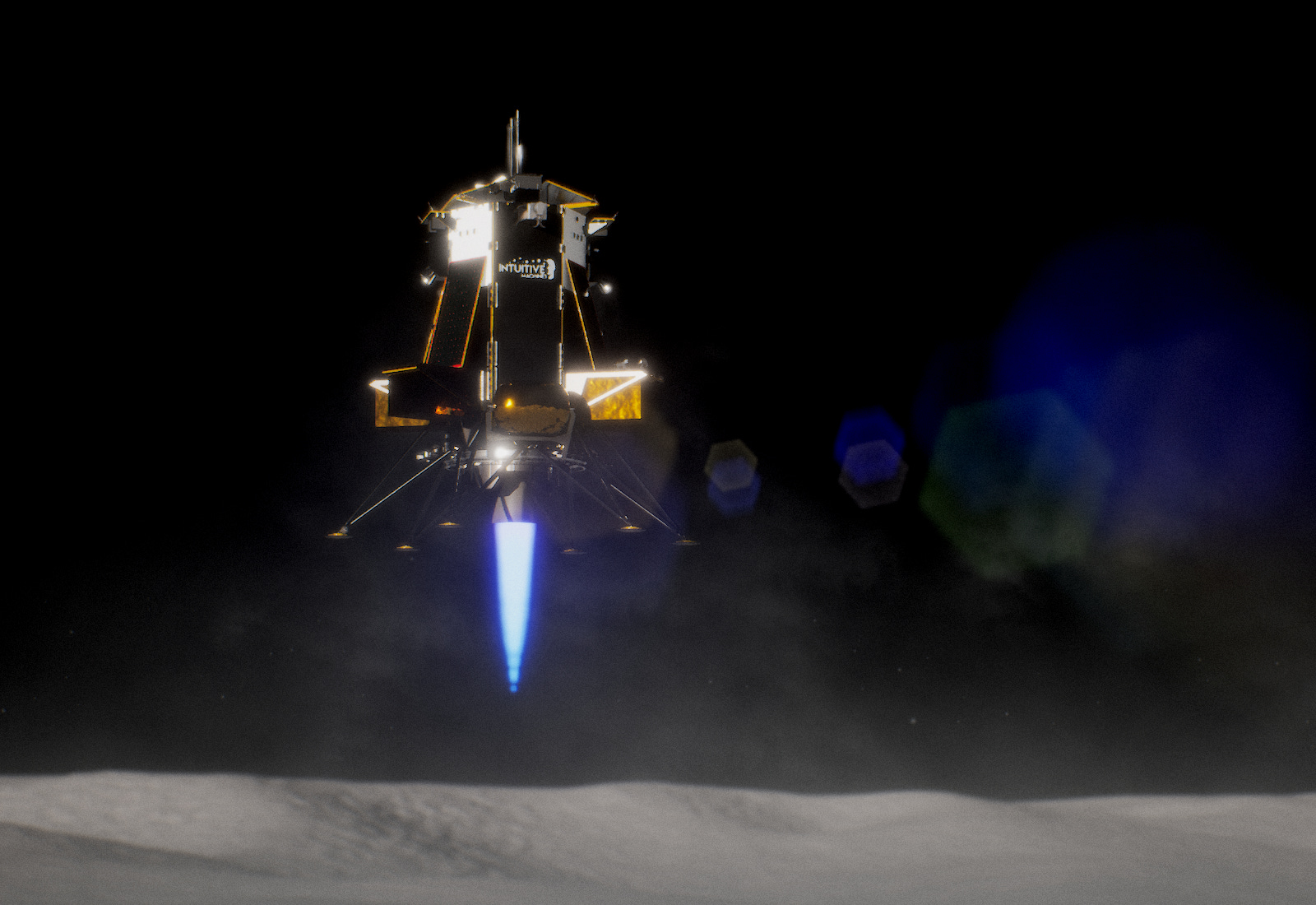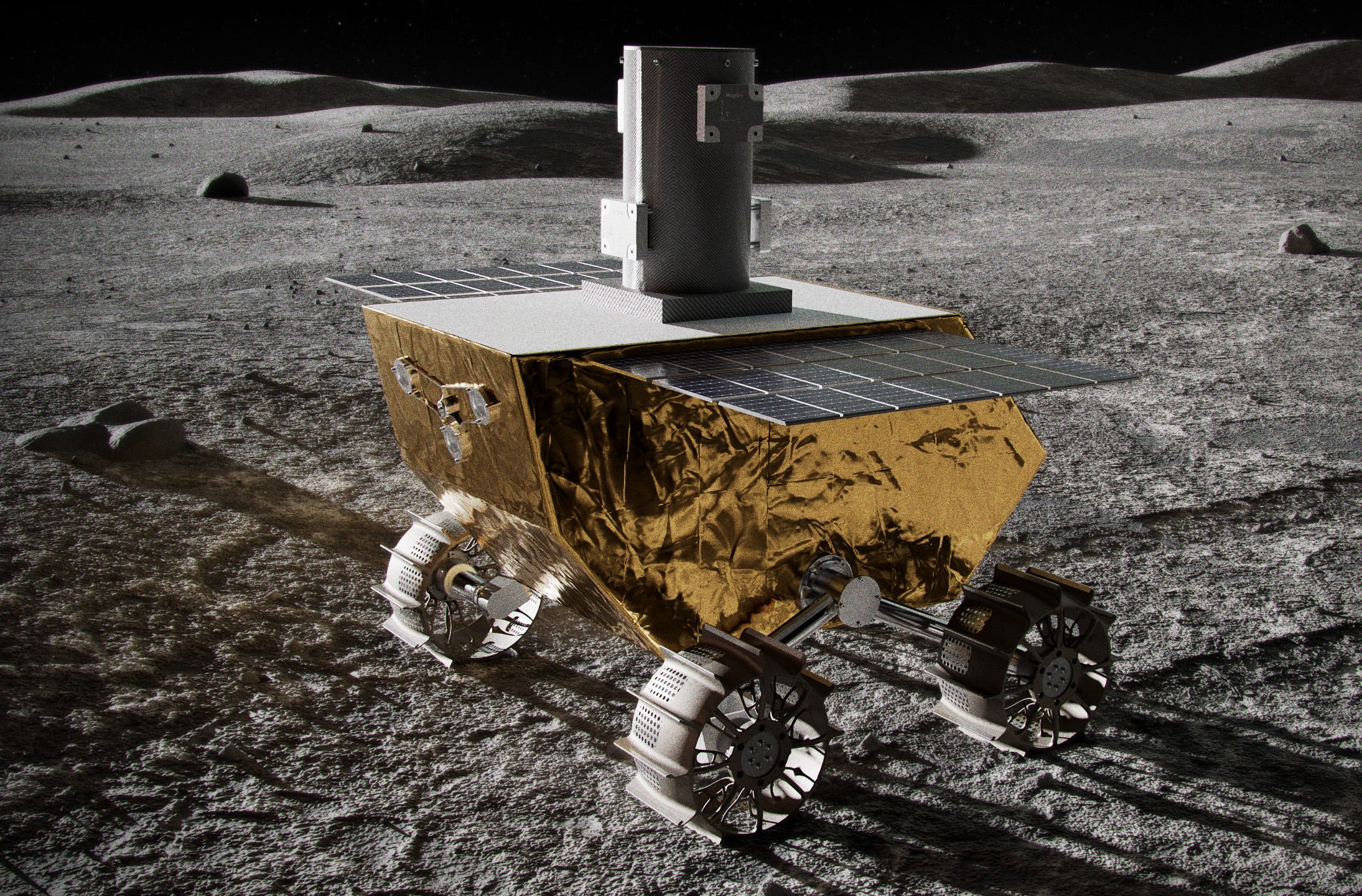NASA is funding a Moon mission to the magnetic swirl of Reiner Gamma
Intuitive Machines' third Moon landing mission will help us better understand the evolution of planetary surfaces across the solar system.
The Moon is host to a type of bright feature quite glaringly called swirls. Here is the lunar swirl of Reiner Gamma.

Reiner Gamma is large enough to be faintly visible on the Moon with the naked eye under favorable conditions.

The Moon lost its global magnetic field well over 3 billion years ago but it does have local areas that are still magnetic. Interestingly, all swirls on the Moon are associated with a local magnetic field. These fields protect parts of the swirl’s surface from being degraded by the solar wind and micrometeorites, making them brighter than their surroundings. On the other hand, the magnetic field lines accelerate solar radiation weathering on regions just besides them. These two mechanisms together are what give all swirls their distinctive bright and dark look.
How do (magnetic) swirls form in the first place though? We don’t know.
Scientists have some interesting ideas on the matter but ultimately we need to precisely measure the local magnetic field strength of regions within the swirl by sending a surface mission. We also need to measure exactly how radiation particles from the solar wind interact with the swirl's magnetic field, and how it affects and shapes the local environment. In November 2021, NASA funded a commercial Moon mission part of their CLPS program to do exactly that.
NASA selected Intuitive Machines to deliver 92 kilograms of science and technology payloads to Reiner Gamma. For a bargain price of $77.5 million, Intuitive Machines will land and jointly operate five rovers and a bunch of science instruments in 2024.

The mission’s primary payload suite Lunar Vertex is a collection of spectrometers and magnetometers on the lander and a rover. The rover, which Lunar Outpost will provide, will drive up to two kilometers over 13 Earth days, exploring at least one bright and dark section of Reiner Gamma. Lunar Vertex will study the swirl’s composition, and map the strength and direction of magnetic fields on its surface, complementing observations from past orbiters.

This will be the world’s first mission to a swirl, and will provide us insights into how they form and evolve, better understand effects of the solar wind and bombarding micrometeorites on planetary bodies across the solar system, and shape our understanding of the Moon’s magnetic evolution.
The other four rovers Intuitive Machines’ lander will carry are part of NASA’s CADRE project. The shoebox-sized rovers will autonomously navigate the landed region and collectively better map it than a single rover can. Onboard the lander will also be a South Korean instrument to monitor high-energy particles as the Moon passes in and out of Earth’s magnetic tail. The lander will also host an ESA-provided MoonLIGHT retroreflector, which will reflect laser beams from Earth to make precise distance measurements so as to infer properties of the Moon’s core, the rate at which the Moon is drifting away from Earth, and test parts of General Relativity.
This science-packed mission represents a new phase for NASA’s CLPS program, to send instruments on commercial lunar landers, enhanced by the recent PRISM initiative. The second mission in this enhanced phase will visit the Schrödinger crater on the Moon’s farside in 2024, for which NASA will announce the winning commercial landing bidder next.
The Reiner Gamma landing is Intuitive Machines’ third such NASA contract and also their third Moon mission, to follow their first two missions in 2022. All three missions will see the launch of Intuitive Machines’ Nova-C lander on a SpaceX Falcon 9 rocket.
→ Browse the Blog | About | Donate ♡
